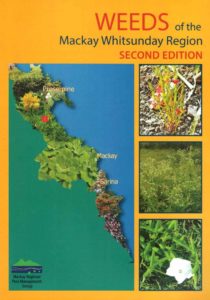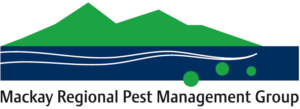
Weed Management
The current weeds in the Mackay Whitsunday Isaac region are threatening our native vegetation and wildlife. The Mackay Regional Pest Management Group are dedicated to discussing and implementing best practices to contain and control these weeds.

Pest Management
Pest, such as pigs and foxes cause havoc in the Mackay Whitsunday Isaac regions. As the pest management group of this area, we are dedicated to discussing, researching and creating projects that help with the control of the pests.

Weeds of the Mackay Whitsunday Region
Book available for purchase for $35!
Drop into the Reef Catchment Mackay Office, Sarina Landcare, Pioneer Catchment Landcare, Whitsunday Landcare or local council office to grab a copy.
- Reef Catchments Mackay - Suite 1, 85 Gordon Street, Mackay
- Sarina Landcare - 101 Beach Rd, Sarina
- Pioneer Catchment Landcare - 6 Swayne St, North Mackay
- Whitsunday Catchment Landcare - 33 Kelsey Creek Road Proserpine
- Mackay Regional Council - Sir Albert Abbott Administration Building 73 Gordon Street, Mackay
- Whitsunday Regional Council - 83 - 85 Main Street, Proserpine
What is a Biosecurity Risk?
- Any pest, disease or contaminant
- Something that could carry a pest, disease or contaminant e.g. animals, plats, soil, equipment - known as 'carriers'
- Has, or may have, a significant harmful effect on human health, social amenity, the economy, or the environment, and
- Is caused by pest, disease or contaminant
A biosecurity event
- Has, or may have a significant effect on human health, social amenity, the economy, or the environment and
- Is caused by a pest, disease or contaminant.
Download Biosecurity Plans
Weeds and pest animals have significant negative impacts on the environment, the economy and the community, as well as human health and recreation. The purpose of managing invasive species is to prevent new introductions, limit negative impacts of current infestations and work towards reducing infestations.
Council Biosecurity Links
Council Contacts
Did You Know?
All Queenslanders have a ‘general biosecurity obligation’ (GBO) under Queensland's Biosecurity Act 2014. This means that everyone is responsible for managing biosecurity risks that are:
- Under their control and
- That they know about, or should reasonably be expected to know about.
Under the GBO individuals and organisations whose activities pose a biosecurity risk must
- Take all reasonable and practical steps to prevent or minimise each biosecurity risk
- Minimise the likelihood of causing a biosecurity event and limit the consequences if such an event is caused
- Prevent or minimise the harmful effects a risk could have, and not do anything that might make any harmful effects worse.



